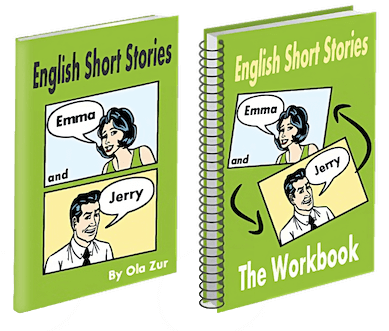How to Help Your Students
Learn to Read
English
If you want to help your students learn to read English you need to give them some guidelines, and some interesting materials to read. Here are some suggestions to keep your reading lessons fresh and useful.
Tips to Teach Your Students to Learn to Read English
The first thing you need to do is find interesting texts.
No students want to read if they have boring texts. If you can find
real news stories or magazine articles then that is much better but
make sure the vocabulary and grammar isn’t too difficult. You can also
use excerpts from books or scripts, or song lyrics, depending on the
level of the group. Finding interesting texts for beginners can be more difficult. You need to reinforce the vocabulary they know rather than give them too many new words, which means it is difficult for them to understand the text. Of course you can use children’s picture books, but if you are teaching teenagers or adults these often won't be appropriate. And even kids' books can use a lot of new words. One option if you have a very low level class is to use the English Short Stories for Complete Beginners. This will help them read but won't give them complicated vocabulary.
Teaching your students to use dictionaries is important at every level. Either a bi-lingual dictionary or a picture dictionary for lower levels, or a single language dictionary for advanced students. Encourage them to look up words they don't know, and not guess them. If a student looks up a word, they are more likely to remember it, and you can be sure they understand the meaning.
In class, reading can become a little boring. You can make your reading lessons livelier by trying some of the following techniques. Most of them can be adapted to suit any level.
Running dictation
Put a short reading passage on a wall somewhere. Students are in pairs,
one goes to the text, remembers a section of it, goes to their partner
and repeats it. The seated partner writes exactly what their ‘running'
partner says. Check for spelling and punctuation at the end.
Jigsaw reading
Each pair of students has two connected texts. Each reads and then
gives their partner a summary of their text.
Comprehension questions
Instead of you giving the students the comprehension questions, get
them to write their own.
Memory quiz
Ask questions to see how much the students remember.
Re-arranging the text
Cut the text up in sections. Place them around the class. Students work
in small groups to find a complete set and put them in order.
Grammar or vocabulary races
Ask them to find an example of a certain grammar point or a synonym for
another word. They raise their hand when they find it. If you want your students to learn to read English then the most important thing they can do is practice. That isn't something you can force them to do. Make them aware of where they can get appropriate reading material and you will be giving them the best help you can.
Frequently Asked Questions
What is the best way to help ESL students learn new words?
Start with reading! Reading helps students see how words work together. It's better to start with reading before moving to writing and speaking. Remember: reading first, then speaking and writing.
Why do regular textbooks move too fast?
Most textbooks are designed to cover lots of material quickly. They introduce new vocabulary and grammar faster than most students can actually learn it. This rush can leave students feeling overwhelmed and confused.
What problems do regular textbooks give beginners?
Regular textbooks have three main problems:
- These textbooks use too many new words at once.
- They include difficult grammar like simple past, past perfect, and present perfect, and they don't repeat words enough.
- They often jump into complex sentences before students are ready.
Why is the past tense a problem in regular textbooks?
Beginners should only work with simple present tense at first. Regular textbooks often mix in past tense, past perfect, present perfect, and other complex grammar structures too early. This confuses students and makes learning harder.
How many times should students see new words?
Students need to see words many, many times to learn them well. Good beginner materials should repeat words frequently – much more than regular textbooks do. This repetition helps students remember words naturally.
Won't all this repetition bore my students?
Not if it's done right! Click here to read how to do it correctly and see examples from our eBooks for English learners.
Why start with reading instead of speaking?
It's like how babies crawl before they walk - reading gives students a strong foundation. They can see how English works before trying to produce it themselves through speaking or writing. Think of it as: first watch and learn, then try it yourself.
What's more important: covering lots of material or making sure students understand?
Understanding is more important than covering lots of material. It's better for students to really learn a smaller number of words than to barely remember many words. That's why this website focuses on really learning English!
Click here for interesting yet simple short stories for practicing the sounds of the alphabet.
Get Updates, Special Offers, and English Resources
Download your FREE GIFT (the first two chapters of
English Short Stories Book and Workbook)
as soon as you join!

By submitting your email, you consent to receiving updates and newsletters from us and to the sharing of your personal data with third parties for the purposes of sending you communications. We will not spam you. You can unsubscribe at any time. For more information, please see our privacy policy.
What is the best way to help ESL students learn new words?
Start with reading! Reading helps students see how words work together. It's better to start with reading before moving to writing and speaking. Remember: reading first, then speaking and writing.
Why do regular textbooks move too fast?
Most textbooks are designed to cover lots of material quickly. They introduce new vocabulary and grammar faster than most students can actually learn it. This rush can leave students feeling overwhelmed and confused.
What problems do regular textbooks give beginners?
Regular textbooks have three main problems:
- These textbooks use too many new words at once.
- They include difficult grammar like simple past, past perfect, and present perfect, and they don't repeat words enough.
- They often jump into complex sentences before students are ready.
Why is the past tense a problem in regular textbooks?
Beginners should only work with simple present tense at first. Regular textbooks often mix in past tense, past perfect, present perfect, and other complex grammar structures too early. This confuses students and makes learning harder.
How many times should students see new words?
Students need to see words many, many times to learn them well. Good beginner materials should repeat words frequently – much more than regular textbooks do. This repetition helps students remember words naturally.
Won't all this repetition bore my students?
Not if it's done right! Click here to read how to do it correctly and see examples from our eBooks for English learners.
Why start with reading instead of speaking?
It's like how babies crawl before they walk - reading gives students a strong foundation. They can see how English works before trying to produce it themselves through speaking or writing. Think of it as: first watch and learn, then try it yourself.
What's more important: covering lots of material or making sure students understand?
Understanding is more important than covering lots of material. It's better for students to really learn a smaller number of words than to barely remember many words. That's why this website focuses on really learning English!
Get Updates, Special Offers, and English Resources
Download your FREE GIFT (the first two chapters of
English Short Stories Book and Workbook)
as soon as you join!

By submitting your email, you consent to receiving updates and newsletters from us and to the sharing of your personal data with third parties for the purposes of sending you communications. We will not spam you. You can unsubscribe at any time. For more information, please see our privacy policy.





